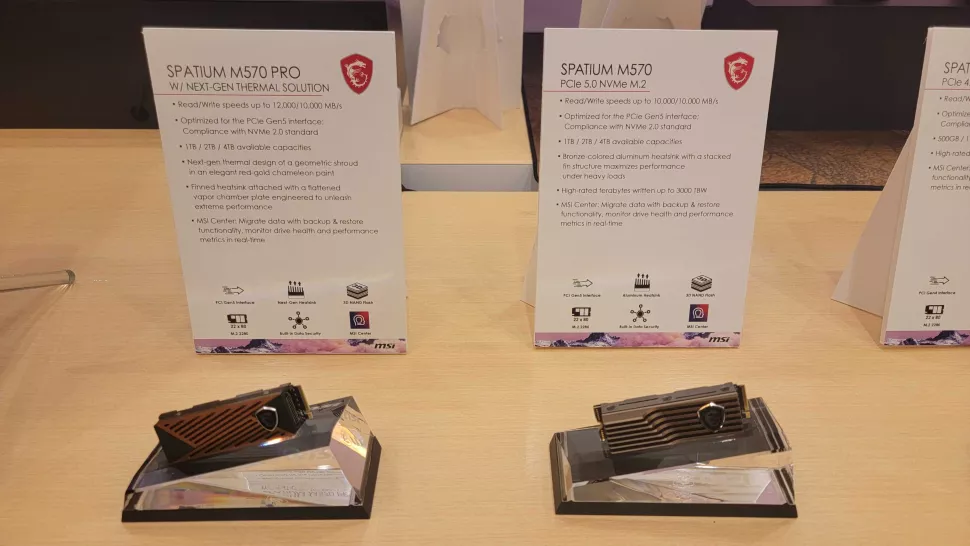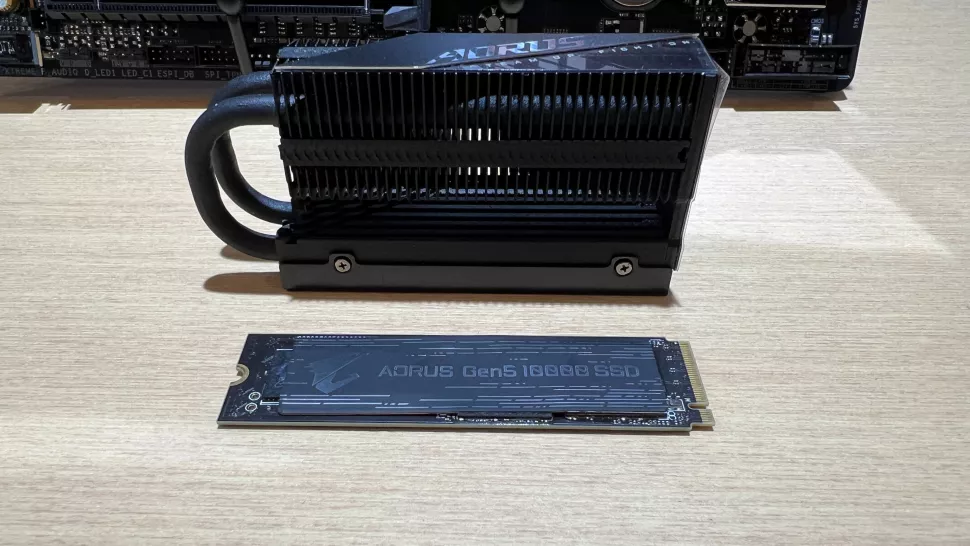
PCIe 5.0 solid-state drives were expected at the time of the release in 2021 of Intel Alder Lake processors with support for this standard. Last year didn’t change the situation, but 2023 may well be the year of consumer SSDs with support for the new high-speed port.

At CES 2023, four manufacturers demonstrated five models of PCIe 5.0 solid-state drives that will go on sale this year or next. Adata, Gigabyte, MSI and Patriot do not develop their own controllers or NAND memory – most drives use the Phison E26 controller, except for Adata with the Silicon Motion (SMI) SM2508.
Phison PS5026-E26 and SMI SM2508 controllers
Many drives use the Phison PS5026-E26 (or E26 for brevity) controller. The 12nm controller has 8 channels and delivers up to 2,400 MT/s with a theoretical maximum sequential read speed of 14,000 MB/s and sequential write speed of up to 11,800 MB/s. None of the demonstrated devices is designed for such high speeds.
Phison E26 boasts up to 1.5 million read operations per second and 2 million write operations. To achieve maximum speeds, the drive must have perfect firmware and very fast NAND flash memory.
Tame Power BI and predict the future of your company.
REGISTER!
All drives based on Phison work in a pair with 232-layer Micron NAND memory. Any drive with a read speed of 10,000 MB/s will use 1,600 MT/s of memory, which is expected to be released in the second quarter of this year. Those with read speeds of 12,000 MB/s are using 2,000 MT/s memory, which comes out in late Q2 or early Q3. A reading speed of 14,000 MB/s corresponds to a memory of 2,400 MT/s, which may appear only in the fourth quarter.
Silicon Motion’s 4-channel 12nm SM2508 controller claims up to 2 million I/O operations per second in read and write, with read speeds of up to 14,000 MB/s and write speeds of up to 12,000 MB/s.
PCIe 5.0 drives
MSI will release two SSDs based on the Phison E26 controller. MSI Spatium M570 Pro will receive a fast Micron NAND flash memory of 2000 MT/s and read/write speeds of 12,000/10,000 MB/s. The slower Spatium M570 uses 1600 MT/s NAND memory and delivers speeds of 10,000 MB/s.

The M570 Pro features a “next-generation thermal design” – a vapor chamber with a finned heatsink on top of a flat vapor chamber plate and a closed, geometrically shaped shroud. The M570 has a simple aluminum radiator with fins, but no vapor chamber. Both drives will be available with a capacity of 1, 2 or 4 TB. The M570 Pro was tested at the show, and the drive showed sequential read and write speeds of 12,342 and 11,814 MB/s. The Spatium M570 will arrive in the second quarter of 2023, with the M570 Pro following.

Adata has demonstrated an as-yet-unnamed PCIe 5.0 solid-state drive that will be released under the XPG gaming brand. XPG SSD is the only drive with a Silicon Motion SM2508 controller. It will get a metal radiator with a miniature fan and a base plate made of stainless steel. Adata did not reveal the type of memory used or the timing of the release, but according to rumors, the drive should not be expected before 2024.

Gigabyte introduced the PCIe 5.0 Aorus Gen5 10000 solid-state drive back in the summer. The company has not given an estimated release date, but it is expected to be released at the same time as the MSI Spatium M570 Pro – both share the same components. A feature of Aorus Gen5 is the possibility of equipping it with a giant radiator, which can be seen in the photo.

The Patriot also features a PCIe 5 SSD based on a Phison E26 controller and 2000 MT/S NAND. Other details and a release date are unknown, but the drive looks similar to the MSI M570 Pro. It will be available in capacities from 1 TB to 4 TB. It seems that it is too early to talk about the cooling system – a large radiator with a fan does not look ready, rather it is an engineering option.
AMD is working on consumer-level CXL RAM – the technology will simplify and speed up the exchange of data between PC components
Source: Tom’s Hardware




